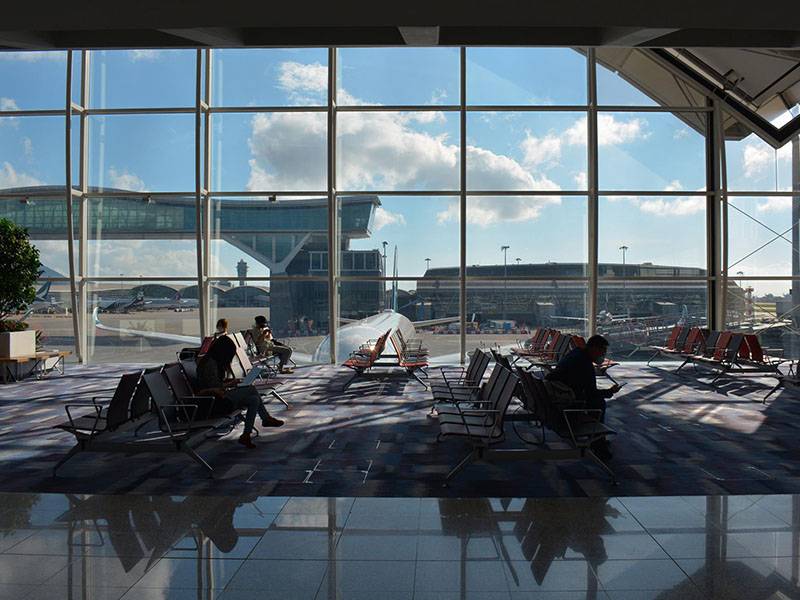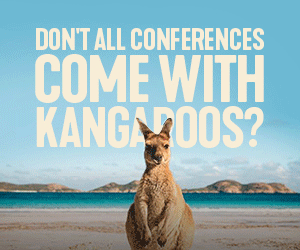PATA: “Now is an opportunity to build back better - and it can yield better margins.”

"Stay safe, stay strong and may the force be with you...” that’s how Mario Hardy has said goodbye to his partners and collaborators as CEO of the Pacific Asia Travel Association (PATA), last May. After its 70th anniversary and under a new leadership of Liz Ortiguera (pictured right), this membership-based association is now trying to predict the course of any form of recovery for the travel and tourism sector in the APAC region. We caught up with the new leader about the challenges of guiding an association through a storm, new PATA events, and programmes to support business events in the region.
1) Asia-Pacific was the region where the pandemic first hit but also the frontrunner in the recovery and of its spread. How is the Asia-Pacific travel and tourism industries doing at the time of our conversation?
Most of Southeast Asia is currently in some form of lockdown and border controls are in place across most of Asia-Pacific and Australia-New Zealand are highly restricted. It’s notable that a number of countries in the East have much lower tolerance for case breakouts. As an example, Australia, New Zealand and Singapore will close city borders and impose lockdowns if case numbers are in the double digits.
We’ve just issued a mid-year revision of our ‘Asia Pacific Visitor Forecasts 2021-2023', and PATA still anticipates that the region will see a challenging year in the balance of 2021. However, we forecast a strong recovery occurring thereafter, albeit in a very uneven fashion. This recovery is however dependent on effective and equitable vaccine rollout programmes and mitigation of the threat of new variants.
2) There are a number of initiatives and events that PATA has been developing in order to restore confidence in the adventure and leisure industries. What has been planned to endorse business travel in Asia Pacific this time around?
Throughout the pandemic, PATA has continued hosting both virtual and, more recently, hybrid events bringing together our diverse network of governments, enterprises, universities and NGOs. The focus of PATA has historically been the sustainable tourism development, but our forums convene all segments aligned on that mission. Through destination marketing support we are reinforcing confidence and knowledge in all forms of travel to our partner destinations. We can all anticipate that with increased border controls and health protocols, an increased proportion of trips will blend business and leisure. Trips will be fewer but more extended and multi-purpose.
3) How challenging was it to keep the relationship and support with your members intact at a distance?
The travel industry impact has been particularly hard. The team has done and continues to do a fantastic job of creating virtual sessions with our members and industry peers to keep them engaged, inspired and informed of the current situation. Over the past 12 months, PATA delivered 135 virtual sessions (webinars and live experiences) for the benefit of members and the industry at large. In addition, my predecessor and the team hosted a vast number of virtual meetings and joined other organisations’ webinars.
4) And after an overwhelming experience with webinars, virtual tours and online campaigns mitigating the absence of face-to-face meetings, what will be left of this digital component for a travel association like PATA?
Virtual webinars and meetings are now an integral part of the new normal. That said, travel and many other industries are most empowered with in-market, in-person travel experiences and human interactions. Hybrid events will continue to be the norm but the strengths of both virtual and “in real life” experiences will be leveraged and blended.
5) Recently, PATA has become a signatory of “The Future of Tourism Coalition” to chart a more sustainable direction for tourism. Why did it take a pandemic crisis to wake us up to this factor?
Research has shown that government and industry regularly deprioritize disaster prevention and then need to spend a multiplied amount on disaster response. Organizations like PATA exist to provide thought leadership, put forward best practices and proactively drive a positive movement. Now is an opportunity to build back better - and it can yield better margins. Part of our role is to identify and share great industry models that combine sustainability AND profitability.
6) According to your industry data, analyses and estimations, what will it take until the Asia Pacific region returns to pre-pandemic levels?
Prior to the pandemic, the Asia Pacific was the fastest growing region for travel. There is a lot of pent-up demand right now, particularly from large markets like China and Australia. With the recovery, that demand will get channelled into the targeted markets that control outbreak volumes, deploy vaccines broadly and restore consumer confidence.
For 2021, Asia Pacific traveller traffic will languish given limited border openings and strict health and safety protocols, assuming effective vaccine deployment; however, 2022 appears to be promising. The region should have annual increases across the board in 2022, ranging from gains of 105% to 320% under the mild COVID-19 impact scenario, to between 8% and 75% even under more severe circumstances. The absolute volume of arrivals will still remain below the 2019 benchmark for international visitor arrivals in 2022, but will begin to fully recover in many markets by 2023.
7) You were recently named PATA's next CEO, succeeding Dr Mario Hardy in the arduous task of leading the association through an industry-wide transition process. What was asked of you in terms of priorities and objectives by the Executive Board?
I was selected in particular for my diverse experience base. I started as a scientist/engineer in the pharma industry, worked with American Express in three divisions (with Card and Travel being membership business models) and spent the last 5 years working with start-ups. Today’s challenges require a multi-disciplinary approach to drive solutions. My focus will be on: reinforcing the value proposition to support our members through this crisis; incorporating innovation to create a more flexible, powerful network and member engagement model; leverage the strength of our diverse association network to support member and industry recovery.
Other Articles
About Us
Supported by the Union of International Associations (UIA), the International Association of Professional Congress Organisers (IAPCO) and the Interel Group, the global public affairs and association management consultancy, Headquarters Magazines serve the needs of international associations organising worldwide congresses.















